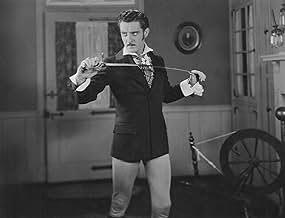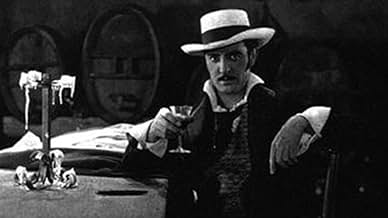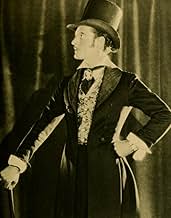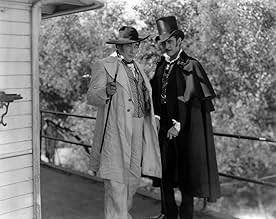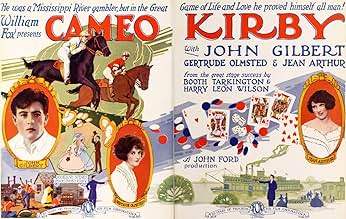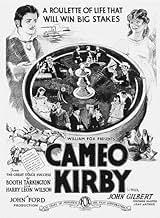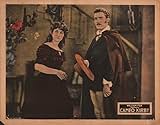Ajouter une intrigue dans votre langueWrongfully blamed for the death of Col. John Randall, Cameo Kirby (Gilbert) must find the true villain and clear his name before he can declare his love for Adele (Olmstead), the dead man's ... Tout lireWrongfully blamed for the death of Col. John Randall, Cameo Kirby (Gilbert) must find the true villain and clear his name before he can declare his love for Adele (Olmstead), the dead man's daughter.Wrongfully blamed for the death of Col. John Randall, Cameo Kirby (Gilbert) must find the true villain and clear his name before he can declare his love for Adele (Olmstead), the dead man's daughter.
- Récompenses
- 1 victoire au total
W.E. Lawrence
- Tom Randall
- (as William E. Lawrence)
George Reed
- Croup
- (non crédité)
Histoire
Le saviez-vous
- AnecdotesFilm debut of Jean Arthur.
- ConnexionsVersion of Cameo Kirby (1914)
Commentaire à la une
There's an attempt at a more sophisticated storytelling here with Cameo Kirby from John Ford, but I don't think he quite knows how to fill in the gaps, leaving a finale that feels somewhat curious mixed with thrilling at the same time.
Cameo Kirby (John Gilbert) is a gambler on a riverboat with a shady past in New Orleans. He killed a man in a quick fight that ended with Kirby shooting the man dead with a pistol and getting out of the bar by the skin of his teeth in an opening flashback sequence that is surprisingly entertaining. The gunshot is a guffaw moment as it's so brazen and sudden, creating the implication that Kirby is a man willing to kill. On the riverboat at the present, Kirby gets into a private poker match with Colonel John Randall, a wealthy local patriarch, and Colonel Moreau, a slick gambler and card cheat. Moreau wins big against Randall, and Kirby does what he can to return Randall's property to him. However, Randall is too despondent at his loss and ends up shooting himself dead. Moreau blames this on Kirby, given his reputation it's something easy for other people to believe, and shoots at Kirby next to the boat's taffrail, Kirby then falling into the water.
This is where things simply get murky. The news of Randall's death reaches his adult children including Tom and Adele. Tom, blaming Kirby, is dead set against Kirby's continued existence, and yet Kirby ends up managing to get close to Adele. At the same time, Moreau gets closer to the family as well. They eventually cross paths and agree to a duel where Moreau dies at Kirby's hand. This ends up looking like a murder instead of the outcome of a duel, and the Randall children are out for blood.
The movie's climax is a different one from Ford because it's not a series of action beats, but it's a continued sense of escalation and tension as the Randall boys charge towards the house where Kirby is with Adele and others. What is happening is twofold. The first is that Kirby is making his case, partially through Adele, that he did not kill Colonel Randall at all and that he did not kill Moreau in cold blood while those coming to kill him are charging straight at him. It's a surprisingly tense moment that drags on just long enough to not get boring or repetitive.
This is one of those silent films that suffers due to its silence. The lack of dialogue makes characters thinner in the same amount of time as you would get in a talkie. It doesn't help that the sole remaining print has only Portuguese intertitles, as well. Still, there are ideas here at play, an overly-simplified story with an interesting extension of John Ford's conception of an exciting sequence. These movies were made really quickly back in the teens and twenties, churning out feature length films in weeks rather than months or years, so it's not the biggest surprise that a format that doesn't naturally lend itself to the kind of plot based storytelling that requires a certain level of immediate character work to thrive doesn't always get the best chance to really shine under these circumstances.
Cameo Kirby (John Gilbert) is a gambler on a riverboat with a shady past in New Orleans. He killed a man in a quick fight that ended with Kirby shooting the man dead with a pistol and getting out of the bar by the skin of his teeth in an opening flashback sequence that is surprisingly entertaining. The gunshot is a guffaw moment as it's so brazen and sudden, creating the implication that Kirby is a man willing to kill. On the riverboat at the present, Kirby gets into a private poker match with Colonel John Randall, a wealthy local patriarch, and Colonel Moreau, a slick gambler and card cheat. Moreau wins big against Randall, and Kirby does what he can to return Randall's property to him. However, Randall is too despondent at his loss and ends up shooting himself dead. Moreau blames this on Kirby, given his reputation it's something easy for other people to believe, and shoots at Kirby next to the boat's taffrail, Kirby then falling into the water.
This is where things simply get murky. The news of Randall's death reaches his adult children including Tom and Adele. Tom, blaming Kirby, is dead set against Kirby's continued existence, and yet Kirby ends up managing to get close to Adele. At the same time, Moreau gets closer to the family as well. They eventually cross paths and agree to a duel where Moreau dies at Kirby's hand. This ends up looking like a murder instead of the outcome of a duel, and the Randall children are out for blood.
The movie's climax is a different one from Ford because it's not a series of action beats, but it's a continued sense of escalation and tension as the Randall boys charge towards the house where Kirby is with Adele and others. What is happening is twofold. The first is that Kirby is making his case, partially through Adele, that he did not kill Colonel Randall at all and that he did not kill Moreau in cold blood while those coming to kill him are charging straight at him. It's a surprisingly tense moment that drags on just long enough to not get boring or repetitive.
This is one of those silent films that suffers due to its silence. The lack of dialogue makes characters thinner in the same amount of time as you would get in a talkie. It doesn't help that the sole remaining print has only Portuguese intertitles, as well. Still, there are ideas here at play, an overly-simplified story with an interesting extension of John Ford's conception of an exciting sequence. These movies were made really quickly back in the teens and twenties, churning out feature length films in weeks rather than months or years, so it's not the biggest surprise that a format that doesn't naturally lend itself to the kind of plot based storytelling that requires a certain level of immediate character work to thrive doesn't always get the best chance to really shine under these circumstances.
- davidmvining
- 20 août 2021
- Permalien
Meilleurs choix
Connectez-vous pour évaluer et suivre la liste de favoris afin de recevoir des recommandations personnalisées
Détails
- Durée1 heure 10 minutes
- Couleur
- Mixage
- Rapport de forme
- 1.33 : 1
Contribuer à cette page
Suggérer une modification ou ajouter du contenu manquant

Lacune principale
By what name was L'homme aux camées (1923) officially released in Canada in English?
Répondre
